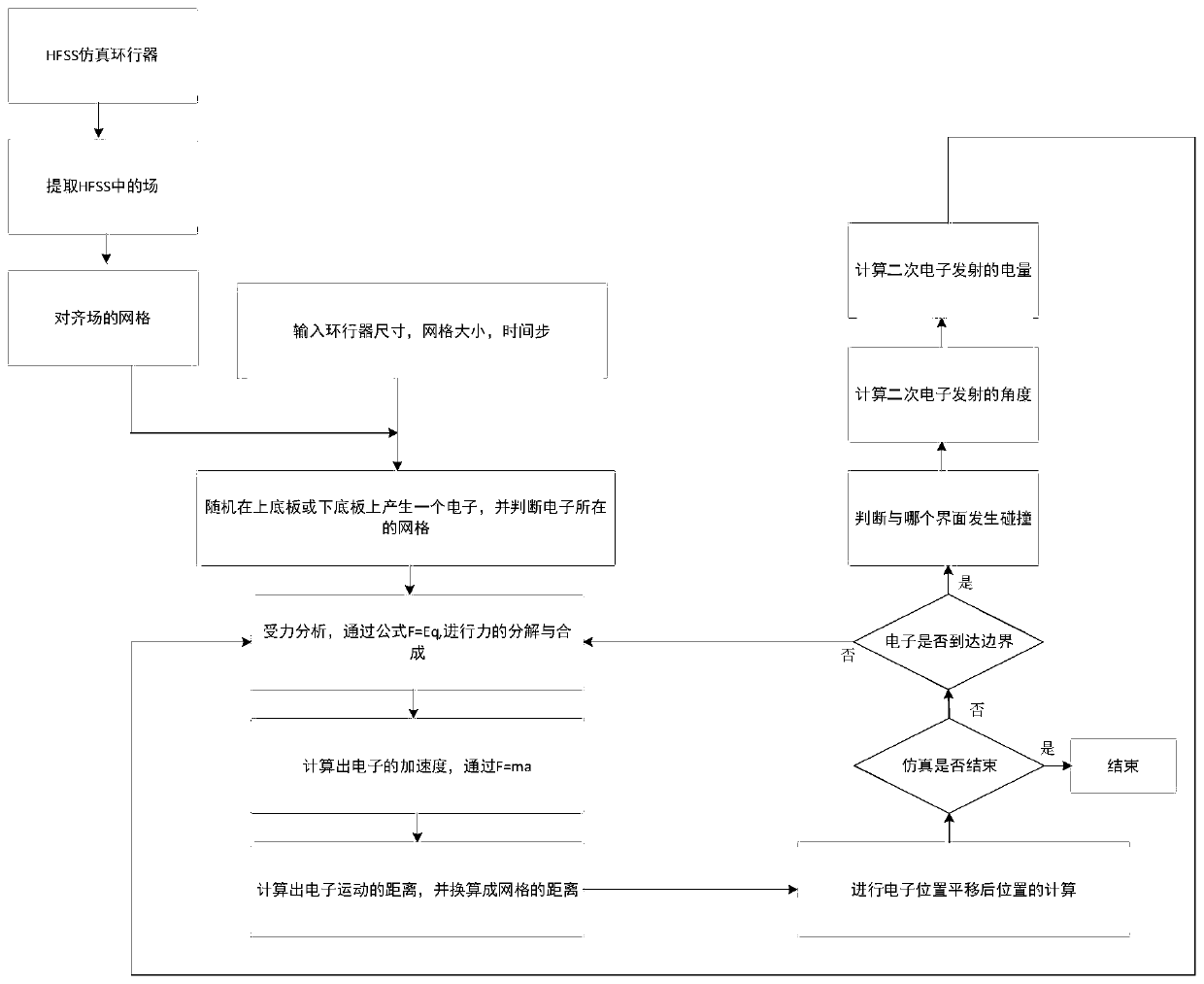Time domain and frequency domain combined non-reciprocal medium micro-discharge threshold prediction method
A technology of discharge threshold and prediction method, applied in the field of electromagnetic field and microwave, can solve problems such as low computing efficiency, and achieve the effects of high precision, improved computing efficiency, and high computing efficiency
- Summary
- Abstract
- Description
- Claims
- Application Information
AI Technical Summary
Problems solved by technology
Method used
Image
Examples
Embodiment Construction
[0049] Compared with the numerical simulation of micro-discharge of metal microwave devices, the numerical simulation of micro-discharge of non-reciprocal media microwave devices is much more complicated. First of all, the mechanism of secondary electron emission on the surface of non-reciprocal dielectric materials is more complex, involving multiple complex physical factors such as internal secondary electron impact ionization loss, defect state distribution, and surface charge accumulation. At present, the SEY theoretical model of non-reciprocal media surface cannot comprehensively analyze various factors. Secondly, the microdischarge analysis of non-reciprocal media microwave devices involves the accurate modeling of non-reciprocal media microwave devices, the coupling and autonomy of electromagnetic field charge accumulation on the surface of non-reciprocal media and other physical processes. Numerical simulation of the discharge poses further challenges.
[0050] The in...
PUM
 Login to View More
Login to View More Abstract
Description
Claims
Application Information
 Login to View More
Login to View More - R&D
- Intellectual Property
- Life Sciences
- Materials
- Tech Scout
- Unparalleled Data Quality
- Higher Quality Content
- 60% Fewer Hallucinations
Browse by: Latest US Patents, China's latest patents, Technical Efficacy Thesaurus, Application Domain, Technology Topic, Popular Technical Reports.
© 2025 PatSnap. All rights reserved.Legal|Privacy policy|Modern Slavery Act Transparency Statement|Sitemap|About US| Contact US: help@patsnap.com



